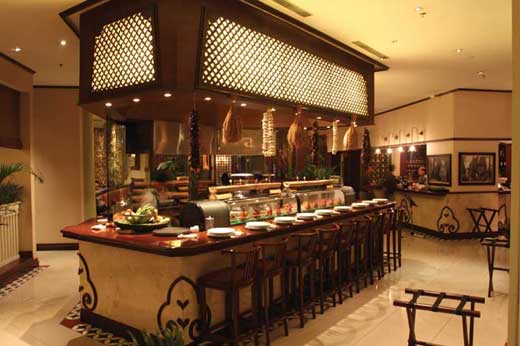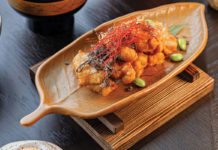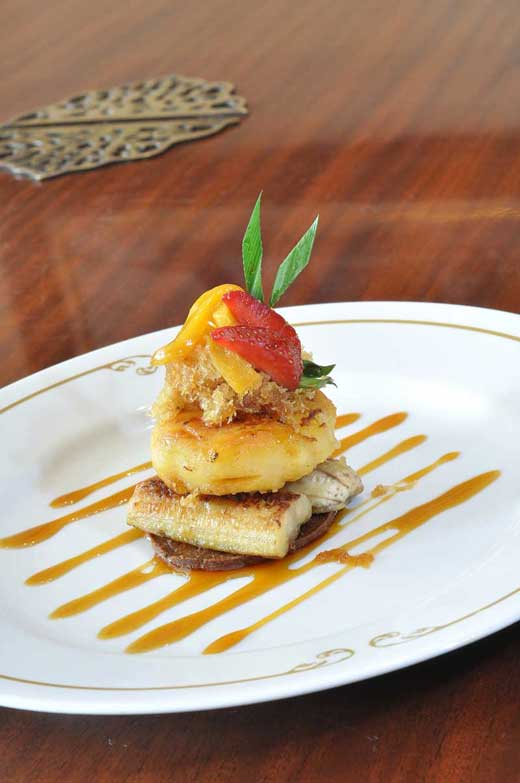Indonesian Fine Dining Defined

There are, quite obviously, many places serving Indonesian food in Jakarta. In fact, if you include all of the kaki lima (food carts) and warung (street side stalls), that number is probably well in the tens of thousands. However, the number of high-end Indonesian restaurants, those offering both refined settings and traditional cuisine, can be counted on two hands. Part of the reason for this is that Indonesians are, in general, sceptical of such places. Many feel that the quality of food you can get at these restaurants pale in comparison to the much cheaper kind you can get on the street. And in some cases, they are correct. But Harum Manis, the Indonesian restaurant created by Cassis Group (who also own Cassis restaurant, one of the capital’s finest French restaurants), defies this trend by offering up not only beautiful interior design but also Indonesian cuisine that is satisfying, authentic and better than almost all of its competitors.
Familiar Yet Sophisticated
The name Harum Manis translates literally into “sweet smell,” but it is usually used to refer to a kind of Indonesian cotton candy that is popular with children. The name is meant to tap into a kind of collective nostalgia that most Indonesians have for the food they grew up eating, and the restaurant lives up to that with a setting that is traditional with modern touches and food that is familiar yet sophisticated. The cuisine comes courtesy of the highly skilled kitchen, led by Chef Beni Iskabul, who has been with the restaurant since it opened some five years ago and has been specialising in Indonesian cuisine for nearly 15 years.
Chef Beni says, “I admit that is sometimes a little difficult to convince Indonesians to eat at a place like this because they’re so used to eating this food by the street. And sometimes street food can be good, but it’s not always easy to tell the good ones. What makes Harum Manis different is that we try to make Indonesian food at an international standard, with beautiful presentations and the finest ingredients. The recipes we use are all authentic, so what we are really trying to do is make the best possible version of each dish for our guests.”
The restaurant’s interior design also takes elements of old and new to create a setting that is distinctively Indonesian but with modern sensibilities. Although mainly referencing the dark, wood-panelled aesthetic of traditional Javanese architecture, light Earth tones and sleek lines give the restaurant a contemporary flair. A repeated motif seen throughout is the bunga kawung, or kawung flower, which is the icon of the restaurant as well as a symbol of symmetry and unity. Open kitchen areas, including a unique sate bar, allow patrons to watch the chefs as they cook up a wide range of Indonesian delicacies.
Culinary Journey Around the Archipelago
Harum Manis’ menu is quite extensive and it includes dishes from all over the archipelago, from Jakarta’s native Soto Betawi to Nasi Ulam Bali. We started our meal with Sarwo Becik Sanget, a sampler platter of appetisers. Anybody who has been in Indonesia long is familiar with gorengan, the deep fried treats often sold by street peddlers. This was easily the best looking and tastiest plate of gorengan I’d ever encountered. It included risoles stuffed with minced chicken and vegetables; varieties of crisp lumpia (spring rolls filled with seafood and chicken); varieties of fried beancurd and many more. It also came with okak-otak, delicate fish cakes, made here with king mackerel, and chargrilled in banana leaves. The platter came with two varieties of peanut sauce, one roasted for an intense nutty flavour, the other spicy and sour.
As chargrilled items are one of the specialities at Harum Manis, sate, Indonesia’s ubiquitous grilled meat skewers, are well-represented. They have sate specialties utilising marinades and sauces from across the land, and a variety of meats including beef tenderloin, tongue, Australian lamb and Wagyu beef. The best way to experience a wide variety of these succulent sate is to order the Sate Satu Meter (One Meter Sate) which includes enough skewers for several people to share.
The kitchen is particularly good at producing large cuts of meat that are smoky and tender through the use of long marinating, braising and roasting techniques. The Kambing Guling Pendopo Agung, which is a lamb dish from the central Javanese city of Tegal, is a prime example. Marinated overnight and slowly roasted, the incredibly tender lamb had lost its gamey smell while the soya sauce, with chilies and shallows, accentuated the sweetness of the meat. Another brilliant dish is their version of one of Indonesia’s most popular dishes, Rendang Bakar Tali Jiwo. It consists of a beef shank that has been slowly braised and char-grilled to tenderness in a spicy and aromatic coconut curry sauce.
There need not be a contradiction between wanting to eat deliciously authentic Indonesian cuisine and wanting to eat in a comfortable, elegant setting. Harum Manis proves that you can do both at the same time.
Harum Manis Turns 6!
On March 26, Harum Manis celebrated its 6th Anniversary with a lunchtime gathering of its loyal patrons, VIP guests and media supporters. The event took on the theme of “Pasar Manis” and featured a collection of cooking stations set up like traditional food stalls. Guests dined on some of the restaurant’s signature dishes, such as Soto Betawi, Bebek Panggang (grilled duck), assorted sate and a wide variety of traditional Indonesian sweets while enjoying a lively music performance.


















